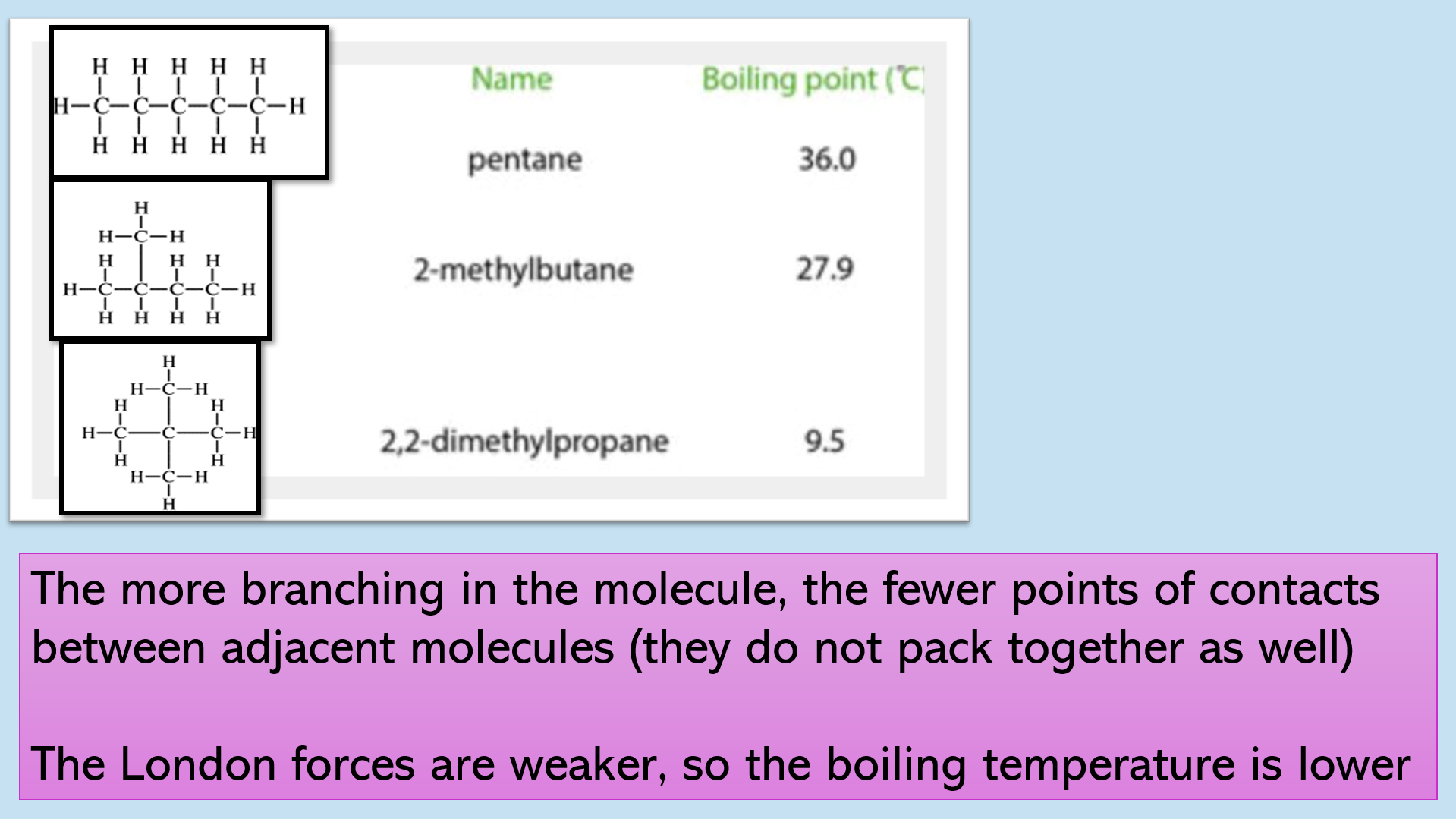


Why does the boiling point of alkanes increase as molecular mass increases? Why does ice float on water? Why is the density of ice less than water? All this and more covered in this comprehensive lesson with questions and answers! This is a Year 12 A level lesson for Edexcel International Unit 2 – WCH12, but it can also be used for all UK exam boards. All the slides in this lesson are fully animated and include answers to every mini plenary question and exam question. The breakdown of the slides (which are best opened on Microsoft PowerPoint) is as follows:
Slide 1 - Title and 5-minute starter. The starter is a grid of four questions entitled ‘last week, last lesson, today’s learning and future learning’. Use this generic slide for all of your lessons by simply changing the questions and the answers each time.
Slide 2 - Lesson objectives (see thumbnail image)
Slide 3 – A note to students to help them align their thinking: this lesson has nothing to do with chemical reactions!
Slide 4 – Data: a table with boiling points of alkanes C1 – C10. Opening question: Why do the boiling temperatures of these unbranched alkanes increase as the relative molecular mass increases?
Slide 5 – Answer to this question is given on this slide
Slides 6 – 8: This section explains to students how branching affects the boiling temperatures of alkanes (less points of contact, etc.)
Slide 9 – Data: a table comparing boiling points of alcohols and alkanes with identical numbers of electrons. Leading question: Why are the boiling temperatures for methanol and ethane so different?
Slide 10 – Answer expounded
Slide 11 – 13: Data - enthalpy of vaporisation table for various alcohols. Print slides 12 – 13
Slide 14 – definition of enthalpy change of vaporisation
Slides 15 – 16: Working out percentage contribution of hydrogen bonding to the enthalpy change of vaporisation for ethanol (worked example)
Slides 17 – 18: Students do the same, but for propan-1-ol
Slide 19 - learning pit-stop to check students’ learning. A series of questions of increasing difficulty, with the stretch and challenge (S+C) being the hardest. Answers animate onto the screen when you click
Slides 20 -21: the trends in boiling temperatures of the hydrogen halides HF to HI
Slides 20 – 28: Anomalous properties of water are discussed extensively here. Comparisons with ammonia and hydrogen fluoride are made regarding boiling point, and the density of ice conundrum is expounded fully
Slides 29 – 36: Exam questions with mark scheme answers (included with the purchase of this resource)
If you have a positive experience with the resource, please leave a positive review! This really helps promote our store! Thanks!
Something went wrong, please try again later.
This resource hasn't been reviewed yet
To ensure quality for our reviews, only customers who have purchased this resource can review it
to let us know if it violates our terms and conditions.
Our customer service team will review your report and will be in touch.